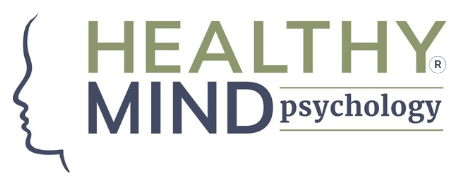What’s Psychology Got to Do With It?
Understanding the Role of Psychology in Chronic Pain Management
It is the most dreaded, common phone call I regularly make. Whenever I receive a referral for psychology services for someone with chronic pain, I brace myself for what I’ll encounter on the other end of the line.
“Hello, I’m Amber, a Pain Psychologist. I’ve received a referral from your doctor suggesting you may be interested in psychology for pain management.”
Crickets.
I’m well-versed in what to say next, although to be honest, it still makes my heart race. I want to be ahead of the game here. I brace for the response, which is always polite but sometimes confused, sometimes hesitant, often dismissive, and every once in a while, I may even detect a slight snarl.
But I am not a threat! How do I explain that? I have worked with hundreds of clients on this journey, and I’ve had the pleasure and privilege of getting to know them, truly understanding their challenges. I help explain the science that is not often discussed and assist people in creating new neurological connections, making lifestyle choices, expanding their thought processes, developing adaptive coping strategies, and resolving traumas or conflicts they may never have realized they possessed. Like everyone who embarks on this therapeutic journey, it is a place of safety, supportive challenge, and personal growth.
“I imagine you’re wondering what’s psychology got to do with your pain?”
This is the point where I hear a story that’s all too familiar yet tugs at my empathy strings. The patient’s journey through the medical community up to this point is often filled with confusion and misunderstanding at best and, at worst, feelings of being blamed, invalidated, shamed, or accused. People always say to me, “This really isn’t just in my head, you know.” Yes, I know.
So the very first answer to the question, “Why does psychology get involved?” has to do with that simple exchange. Living with a chronic pain condition is incredibly challenging. Not only are the symptoms awful, but the disruption to one’s life is significant. Role changes, loss of previously enjoyed activities, feelings of isolation, and mood alterations can all be present and completely alter the course of one’s life. Coping strategies are often lost. On top of this, people seek answers and solutions through the channels they always have, namely, GP to a consultant, possibly a surgeon. In chronic pain conditions, particularly those without a clear medical cause or when pain symptoms persist long after an injury “should” have healed, these normal help channels dry up. When traditional medical practitioners give the message to the patient that they shouldn’t really be suffering like they are, considering the medical history, and therefore there isn’t anything more they can do, the feelings that a patient is left with can be intense. Abandonment is a top emotion reported, as are frustration, disbelief, hopelessness, depression, dismissal, and worry, to name a few. At the end of the appointment, a person is still left with both a painful condition and a message that there isn’t anything that can be done.
It should be noted that professionals rarely tell a patient that “it’s all in your head.” Those words are seldom actually uttered. However, that message is often taken as the primary one, despite the professionals trying to discuss the issue with the client in many other ways.
Some will say…
- “Nothing has shown up on any tests, so you are good to go!”
- “Everything looks normal.”
- “There isn’t anything wrong, so that’s the good news.”
- “This may be down to stress.”
- “What else do you have going on in your life?”
Despite the potential for reframing these messages in a more positive light, patients often perceive them as invalidating due to the lack of adequate explanations about complex neurophysiology, recent pain research, and a holistic understanding of their condition. While test results may indicate that nothing is medically wrong, patients experience day-to-day suffering that is hard to ignore. Many of my patients have expressed their determination to continue seeking answers and understanding, often leading them to explore new routes and professionals who may possess a deeper knowledge of their condition. As a result, when I, as a psychologist, make that phone call to invite someone to see me, I’ve had clients directly voice their concern, saying, “I’m afraid that if I see you, nobody in the medical community will take me seriously anymore.”
I can empathise with this perspective. It reflects a systemic need for change and an update in our collective understanding. In his book “The Painful Truth,” Dr. Monty Lyman delves into the pervasive misunderstandings and misconceptions surrounding chronic pain, not only in the public sphere but also within the medical community.
He writes:
“Medical schools tend to focus on the biomedical model of pain, providing only a passing mention, at best, of its powerful cognitive, psychological, and social influences, particularly in the context of chronic pain. Doctors are often trained to diagnose patients with diseases that have clear and identifiable causes and then prescribe treatments that lead to a clear improvement. This approach is neat, understandable, and satisfying. However, when it comes to persistent pain, the story is different—it’s messy, complex, and profoundly human,” warns Dr. Monty Lyman (page 216).
He further cautions that healthcare professionals can inadvertently exacerbate pain in patients, causing iatrogenic harm by triggering fear and the fight-or-flight response. This often happens when patients are led to believe there is some hidden harm within their body that needs fixing, such as through medication or surgery, only for the expected relief not to materialise. This situation can lead to feelings of helplessness, frustration, rejection, and dismissal, which can, in turn, intensify the experience of pain in a spiralling feedback loop, ultimately resulting in greater disability. These are the unfortunate consequences of a medical system that hasn’t kept up with current knowledge.
Modern pain science underscores the need for a new medical narrative based on extensive research into the neurophysiological role of thoughts and emotions throughout the body, which impact not just pain but overall physical health and chronic conditions. This perspective extends beyond pain to encompass a broader spectrum of health. However, it has yet to gain a solid footing in a systemic approach to recognize the essential role of emotional support and lifestyle optimization as forms of preventive medicine. Dr. Monty Lyman emphasises two critical areas supported by research that should be priorities in chronic pain treatment: reducing stress and inflammation, and comprehending the holistic and lifestyle factors contributing to pain. Another key focus is rewiring an overprotective brain, utilizing techniques to leverage neuroplasticity and enhance a sense of safety. This does not imply that pain is imaginary or “all in one’s head”; far from it. Instead, it means that we can harness the power of our mind and body, along with various tools such as sleep, education, medication, exercise, visualization, relaxation, diet, socialising, and finding purpose, to alleviate pain. I can explain what we now understand and work towards personalized solutions, perhaps with the assistance of my equally knowledgeable colleagues. Unlike the medical professionals mentioned earlier, I am not afraid to embrace complexity.
But, that’s why I’m making this phone call to this patient. That’s what psychology has to do with it.
To find out more about our pain management service please click here.

